
Healing through music
The state of the art of Music in Medicine
In this talk, the speaker will present research themes over the last decades on the impact of music-based programmes in various medical fields, including obstetrics, oncology, haematology, geriatrics, cardiac rehabilitation and family medicine. The scientific literature is very broad and includes randomised clinical trials, mixed methodologies and mechanistic studies in the field of neuroscience, dealing with the psychosocial and physiological responses to specific music programmes. A special focus will be placed on the clinical applications below:
- music during labour and delivery to ease the pain of contractions
- musical compositions created for individuals experiencing physical pain
- specialised music listening strategies for relaxation in older adults suffering from depression and anxiety
- using music technology to reframe the meaning of a cancer diagnosis
- participation in a virtual musical programme to improve social links for the elderly during the pandemic
These various music-based techniques have enabled people from different cultures and backgrounds to demonstrate their ability to choose or create music with therapeutic benefits. Many of the strategies were psycho-educational techniques that could be repeated whenever the person needed a way to deal with pain, depression or anxiety, to improve mood or to create a sense of meaning and wonder.
Some strategies were implemented via telemedicine to allow those who could not access conventional services to take part in music programmes, helping them face personal challenges and emphasise their creativity. These individual experiences highlight the ways in which music can play a meaningful part in a variety of human conditions and contribute to improved health and well-being.
Suzanne Hanser
Professor of Music Therapy, Berklee College of Music Boston (USA)

Outgoing President of the World Federation of Music Therapy and the National Association for Music Therapy. Her Individual National Research Service Award from the NIA established a research programme to develop and study the effects of music and music therapy on pain, anxiety, physiological changes, stress indicators and quality of life. She has carried out clinical studies on the impact of music-based protocols in obstetrics, oncology, haematology, geriatrics, cardiac rehabilitation and family medicine.
- Hanser, S.B. (2016). Integrative Health through Music Therapy: Accompanying the Journey from Illness to Wellness. London: Palgrave Macmillan
- Quinci, M.A., Belden, A., Goutama, V., Gong, D., Hanser, S., Donovan, N.J., Geddes, M., & Loui, P. (2022). Longitudinal changes in auditory and reward systems following receptive music-based intervention in older adults. Sci Rep 12, 11517 https://doi.org/10.1038/s41598-022-15687-5
- Solodiuk, J., Jantz, B., Fuller, M., Osterling, D., Foxman, H., Grafft, N., & Hanser, S. (2020). The use of music by adolescents and young adults with sickle cell disease. Creative Nursing, 26(3), 189-196
Prof. Davide Robbiani
Director of the IRB and professor at USI
He received his doctorate in medicine from the University of Bern in 2000 and a PhD in Immunology from Cornell University, New York, in 2005. He continued his academic career as a researcher at the Rockefeller University.
Robbiani was appointed to head the Institute for Biomedical Research (IRB) in 2020, where he also heads the Laboratory of Immunology and Infectious Diseases and is a professor at the Faculty of Biomedical Sciences at the Università della Svizzera italiana (USI).
Prof. Giuliano Bellorini
Musician and musicologist, lecturer at USI and the “G. Verdi” Conservatory, Milan (I)
Giuliano Bellorini studied music at the Milan Conservatory and literature at the Catholic University, also in Milan, then furthered his studies at the Chigiana Academy in Siena and at the Geneva Conservatory. He has taught at the Conservatories of Matera and Brescia and currently teaches at the ‘G. Verdi’ Conservatory in Milan.
He is a harpsichord player, pianist, composer and musicologist and carries out research focussing on the relationship between the history of Italian literature and the history of music. He is the author of numerous essays.
Music medicine to counter pain, anxiety and stress
In hospital patients, the most frequent causes of suffering are first pain and, immediately afterwards, psychological stress and anxiety. Pain almost always has a well-defined somatic source, but anxiety, stress and depression often operate on a somatic basis, making pain more intense.
Music undoubtedly has an analgesic, anti-anxiety and stress-reducing effect. Enzo Grossi, scientific head of the course, will also present the subject in the light of various systematic reviews taking into accounts dozens of randomised studies on adults and children. As far as pain is concerned, current studies show a real and significant analgesic effect, although of moderate entity.
Women respond better than men and live music works better than recorded music. It also has an important effect on other negative correlates of pain, like nausea and vomiting, psychological distress, high blood pressure and heart rate. Stress is modern society’s silent killer and it is well known that excess cortisol responsible for the damaging effects of stress.
A seminal review by Chanda and Levitin lists a number of studies showing that listening to music clearly reduces cortisol levels. The effect is achieved with music chosen by both the person leading the experiment and the person taking part. Oxytocin appears to act on cortisol. This is stimulated by listening to music and responsible for well-being, creating a sense of empathy, sharing and friendship. Oxytocin and endorphins, which are also brought into play by music, also have analgesic effects, as does dopamine, another neuromediator stimulated by music which is mainly linked to the pleasant feeling of contentment associated with experiencing music.
In conclusion, there is a vast and authoritative body of evidence that music is beneficial for the most frequent symptoms in hospitalised patients. The effects have well-documented complex molecular bases involving both the release of neurochemical mediators and modulating genetic expression. These aspects are often poorly understood by the medical profession, which explains the delay in recognising their effects and implementing programmes.
Enzo Grossi
Medical doctor, lecturer and researcher
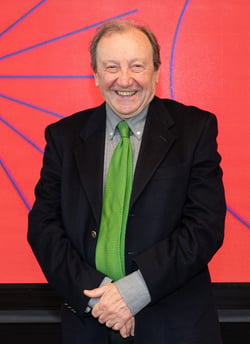
Coordinator of the course and member of the IBSA Foundation for scientific research Advisory Board. Over the last 15 years, he has worked extensively in the fields of art, culture and health with a wide range of scientific publications, seminars and university courses. Since 2012, he has been Scientific Director of the ‘Villa Santa Maria’ Foundation in Tavernerio (Como) and of the Institute of the same name, a home for children and adolescents suffering from neuropsychiatric disorders. Since 2016 he has been Scientific Advisor for the Bracco Foundation, Milan. He has authored more than 500 publications listed on Google Scholar and on PubMed.
- Chanda ML, Levitin DJ. The neurochemistry of music. Trends Cogn Sci. 2013 Apr;17(4):179-93. https://doi.org/10.1016/j.tics.2013.02.007 PMID: 23541122
- Ting, B.; Tsai, C.-L.; Hsu, W.-T.; Shen, M.-L.; Tseng, P.-T.; Chen, D.T.-L.; Su, K.-P.; Jingling, L. Music Intervention for Pain Control in the Pediatric Population: A Systematic Review and Meta-Analysis. J. Clin.Med. 2022, 11, 991. https://doi.org/10.3390/jcm11040991
- Ginsberg JP, Raghunathan K, Bassi G, Ulloa L. Review of Perioperative Music Medicine: Mechanisms of Pain and Stress Reduction Around Surgery. Front Med (Lausanne). 2022 Feb 4;9:821022. https://doi.org/10.3389/fmed.2022.821022 PMID: 35187004; PMCID: PMC8854756
- Facchini M, Ruini C. The role of music therapy in the treatment of children with cancer: A systematic review of literature. Complement Ther Clin Pract. 2021 Feb;42:101289. https://doi.org/10.1016/j.ctcp.2020.101289 Epub 2020 Dec 9. PMID: 33316592
- Li Y, Xing X, Shi X, Yan P, Chen Y, Li M, Zhang W, Li X, Yang K. The effectiveness of music therapy for patients with cancer: A systematic review and meta-analysis. J Adv Nurs. 2020 May;76(5):1111-1123. https://doi.org/10.1111/jan.14313 Epub 2020 Feb 19. PMID: 32017183
Alfredo Raglio
Music therapist and researcher at the Maugeri IRCCS Clinical and Scientific Institutes, Pavia (I)
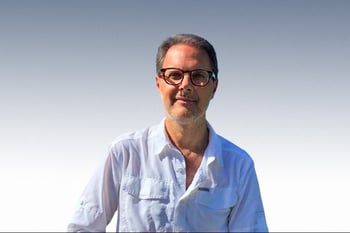
After the academic music and music therapy training, he obtained a PhD in Biomedical Sciences. Head of the Music Therapy Research Laboratory at the Istituti Clinici Scientifici Maugeri IRCCS in Pavia and of the Music Therapy Service at the Bassano Cremonesini Foundation for mentally disabled in Pontevico (BS). Professor and scientific and didactic coordinator of the Master in Music therapy at the University of Pavia and of the “two-year ordinary course” in Music therapy at the Conservatorio “G. Verdi” in Milan.
Melomics-Health is an algorithm created to compose music for treatment purposes. Its features and possible implications in the field of music therapy will be discussed. Listening to music is an important therapeutic tool and a large amount of scientific literature has highlighted its potential. However, the mechanisms of action and therapeutic implications are not yet fully understood. A music algorithmic forms the basis for a meeting point between music and science in the context of treatment.
The pieces produced by Melomics-Health have a therapeutic purpose and by-pass the cultural and aesthetic components of music, i.e. they focus on specific musical structures and parameters that may be effective in treatment. Melomics-Health music can be modelled and designed according to treatment and taking into account the person and the results produced. Examples of algorithmic music and current experiments to test its effectiveness in treatment will be presented during the talk.
- Raglio A, Baiardi P, Vizzari G, Imbriani M, Castelli M, Manzoni S, Vico F, Manzoni L. Algorithmic Music for Therapy: Effectiveness and Perspectives. Appl. Sci. 2021;11:8833
- Raglio A, Bellandi D, Gianotti M, Zanacchi E, Gnesi M, Monti MC, Montomoli C, Vico F, Imbriani C, Giorgi I, Imbriani M. Daily music listening to reduce work-related stress: a randomized controlled pilot trial. J Public Health (Oxf). 2020;42(1):e81-e87
- Raglio A, Vico F. Music and Technology: The Curative Algorithm. Front Psychol. 2017;8:2055
Claudia Gamondi
USI lecturer and head of the EOC Palliative Care and Support Clinic
She graduated in medicine and surgery, specialising in medical oncology and palliative care. She then obtained a Master’s degree in palliative medicine at the University of Bristol (UK) and a PhD In Health Research at Lancaster University (UK).
Since 2014, she has been first clinical director and then head of the Palliative Care and Support Clinic at the Italian Swiss Oncology Institute (IOSI). In 2020, she became a lecturer at the USI Faculty of Biomedical Sciences.
Music education and psycho-cognitive development
When we talk about the influence of music on cognitive development, we generally discuss a whole world of facets that almost always have one conclusion: music is good for you, as the speaker will illustrate.
Scientific literature demonstrates that early music education produces functional and structural effects on the brain. Recent studies show that there is a link between the time studying music begins and increased brain function.
Children are often exposed to an environment enriched by music of all kinds, from toys with sound, to advertising jingles and music heard in the family. As with language, most people develop basic musical skills through interaction with a musical environment. Simply through daily exposure to music and innate inclinations, children acquire musical skills as they grow that they will need for later formal music education aimed at developing more specific expert-level skills.
This kind of implicit musical knowledge makes listeners of a piece of music able to beat time, hear wrong notes, remember and reproduce familiar songs and rhythms, and finally experience the emotions expressed by the music.
Music and language share areas of function and association. There is a lot of correlative evidence to suggest that musical education has a positive impact, and fortunately, systematic reviews and meta-analyses are also beginning to appear in scientific literature that may show causal relationships between music and non-musical domains like language, cognition and executive functions. In conclusion, we can think of music as one of the cognitive tools essential in adulthood for healthy ageing.
Luisa Lopez
Doctor and neurophysiopathologist at the Villa Immacolata Care Home and Fondazione Mariani Milano
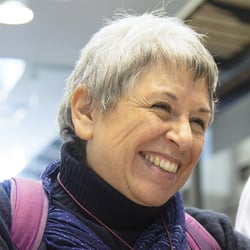
Currently Medical Director at the Outpatient Clinic for Child and Adolescent Neuropsychiatry at the “Villa Immacolata” Care Home in Viterbo. Since 2000, she has also been a scientific consultant for the Mariani Foundation’s Neuroscience and Music project. She is a university lecturer for the Child and Adolescent Neuropsychiatry course at Rome’s Tor Vergata University. She is also Scientific Director of the Oltre Music Therapy Training School in Rome and is a trainer for the Italian Dyslexia Association.
- Flaugnacco E, Lopez L, Terribili C, Montico M, Zoia S, Schön D. Music Training Increases Phonological Awareness and Reading Skills in Developmental Dyslexia: A Randomized Control Trial. PLoS One. 2015 Sep 25;10(9):e0138715. https://doi.org/10.1371/journal.pone.0138715 PMID: 26407242; PMCID: PMC4583182
- Mikulis N, Inder TE, Erdei C. Utilising recorded music to reduce stress and enhance infant neurodevelopment in neonatal intensive care units. Acta Paediatr. 2021 Nov;110(11):2921-2936. https://doi.org/10.1111/apa.15977 Epub 2021 Jun 21. PMID: 34107110
- Aita M, De Clifford Faugère G, Lavallée A, Feeley N, Stremler R, Rioux É, Proulx MH. Effectiveness of interventions on early neurodevelopment of preterm infants: a systematic review and meta-analysis. BMC Pediatr. 2021 Apr 29;21(1):210. https://doi.org/10.1186/s12887-021-02559-6 PMID: 33926417; PMCID: PMC8082967
Dawn Rose
Senior Research, Hochschule Luzern

Her musical background (as a professional drummer, teacher and performer) has influenced her research interests in the psychology of music and movement. Dawn completed a master’s degree in Music, Mind and Brain at Goldsmiths College, University of London where she also earned a doctorate. She is currently a researcher at the Lucerne University of Applied Sciences and Arts, studying the well-being of musicians and exploring the use of music to help mood and movement in sufferers of Parkinson’s disease.
Reflecting on the concomitant development of cognitive, behavioural and socio-emotional abilities in musicians
Studies comparing musically trained and untrained children and adults provide evidence of structural, functional and behavioural changes associated with experience-specific adaptation within the cortical and subcortical sensory-motor neural networks. Researchers have suggested that changes associated with musical learning may transfer to near domains (e.g. fine motor ability) and/or far domains, such as general intelligence.
However, few studies have considered the concomitant development of a range of cognitive, behavioural and socio-emotional measures reflecting emerging musicianship. No other study has attempted to situate these findings within the context of adult musicians’ experience. Here I will discuss how I approached conducting scientific research from a humanistic perspective.
The first study is a quantitative longitudinal quasi-experimental investigation of multiple measures of musicianship (Rose, Jones Bartoli, & Heaton, 2017). Two groups of children were compared; 19 received only statutory school music group lessons over one academic year, and 19 received additional extracurricular musical instrument lessons for the first time during that year.
A battery of tests included measures of aptitude, intelligence, memory, motor abilities and parental and teacher reports of socio-emotional behaviours. Results showed musical training enhanced hand-eye coordination and fluid intelligence.
The second study was a mixed methods case study investigating a child with special educational needs who was tested alongside the cohort. By comparing his scores with the active comparison group, and incorporating the music tutors observations, it was evident that the child benefitted from the individual nature of the lessons and the group nature of the music performance opportunities in spite of his learning difficulties (Rose, Jones Bartoli, & Heaton, 2018).
Lastly, I will present findings from qualitative grounded theory investigation (Rose, 2016) of 28 contemporary working musicians. They reflected upon what it is to be a musician, and what qualities they were aware their experiences had brought to their lives. A musicians’ model of musicianship emerged challenging assumptions relating to the concept of transfer effects. The data generates new hypotheses that musical learning supports and encourages flexible cognitive and behavioural skills and creativity that are further enhanced by the concomitant experience of nonverbal communications encompassing music and socialisation.
- Rose, D., Jones Bartoli, A., & Heaton, P. (2017). Measuring the impact of musical learning on cognitive, behavioural and socio-emotional wellbeing development in children. The Psychology of Music, 47(2), 284-303 https://doi.org/10.1177/0305735617744887
- Rose, D., Jones Bartoli, A., & Heaton, P. (2018). Learning a musical instrument can benefit a child with special educational needs. Psychomusicology: Music, Mind and Brain. 28(2), 71-81 http://dx.doi.org/10.1037/pmu0000209
- Rose, D. (2016). PhD Thesis – ‘On Becoming and Being a Musician: A Mixed Methods Study of Musicianship in Children and Adults’. Goldsmiths, University of London. https://research.gold.ac.uk/id/eprint/19105/1/PSY_thesis_RoseD_2016.pdf
Prof. Giacomo Simonetti
USI professor, head of paediatrics at the Italian Swiss Paediatric Institute
He graduated from the Bern Faculty of Medicine in 1999. He trained in paediatrics and paediatric nephrology at the University Paediatric Hospital in Bern and at the University Paediatric Hospital in Heidelberg, Germany.
In 2005 he became a paediatric specialist, with a sub-speciality in paediatric nephrology in 2008. From 2010 to 2014 he was head of the Paediatric Nephrology Department at the University Paediatric Hospital in Bern and since 2017 has been a tenured professor of paediatrics at USI.
Music therapy in child neuropsychiatric setting and in psychiatry
A series of systematic reviews of randomised controlled trials (RCTs) have shown the beneficial effects of music therapy, while underlining the limitations of existing research.
In schizophrenia, Cochrane’s initial review (2005) highlighted effects on negative symptoms, including emotional blocks, social withdrawal and reduced motivation. Subsequent updates (in 2011 and 2017) documented the growth of research, including more long-term results, and highlighted the importance of the quality of music therapy.
With autism, the first Cochrane review (2006) showed an indication of effects on social interaction, a central area of impairment in autism, but were however based on very small studies. Updates (in 2014 and 2022) confirmed these effects and were based on larger studies, but also showed a large degree of heterogeneity, which may be due to the participants or the actions themselves.
Furthermore, the changing view of autism as a personality trait rather than a disorder highlighted the importance of mental health outcomes and social participation.
In terms of depression, an initial Cochrane review (2011) suggested positive effects on symptoms, but also highlighted shortcomings in methodology and a limited scale. A later update (2017) confirmed these effects, showing positive effects on anxiety and functioning, but still without much clarity on the music therapy methods used.
In general, a growing body of research suggests that music therapy may have beneficial effects and few or no side effects. However, the heterogeneity of outcomes is a growing concern. Music therapy can involve many types of activities, contexts and goals.
More finely tuned mechanistic research is needed to better understand what type of music (from listening to different types of active music making), conducted by whom and in what context, is most helpful for which patients and goals. Functional brain connectivity measured with MRIs is a promising methodology that is starting to be used in the field and could be a predictive biomarker. Recent and ongoing studies into schizophrenia and autism will be discussed in relation to theories of social motivation and predictive reward processing.
Christian Gold
Professor at NORCE Bergen (NOR)

He graduated in music therapy from the University for Music and Performing Arts in Vienna and completed a PhD in music therapy at the University of Aalborg (Denmark). He is a lecturer at the Norwegian Research Centre (NORCE) in Bergen, the University of Bergen and the University of Vienna and has carried out a wide range of studies on promoting mental health through music and psychosocial programmes. He has recently focused on the use of brain imaging to improve our understanding of action mechanisms and processes.
- Aalbers, S., Fusar-Poli, L., Freeman, R. E., Spreen, M., Ket, J. C., Vink, A. C., Maratos, A., Crawford, M., Chen, X. J., & Gold, C. (2017). Music therapy for depression. Cochrane Database Syst Rev, 11, CD004517. https://doi.org/10.1002/14651858.CD004517.pub3
- Geretsegger, M., Fusar-Poli, L., Elefant, C., Mössler, K. A., Vitale, G., & Gold, C. (2022). Music therapy for autistic people. Cochrane Database of Systematic Reviews, 5. https://doi.org/10.1002/14651858.CD004381.pub4
- Geretsegger, M., Mössler, K. A., Bieleninik, Ł., Chen, X. J., Heldal, T. O., & Gold, C. (2017). Music therapy for people with schizophrenia and schizophrenia-like disorders. Cochrane Database of Systematic Reviews, 5. https://doi.org/10.1002/14651858.Cd004025.Pub4
Antoni Rodriguez-Fornells
Researcher at CBPU and ICREA Barcelona (ES)
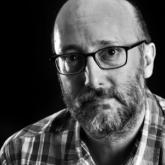
He obtained his PhD from the University of Barcelona. In 2004 he became a research chair at ICREA (the Catalan Institute for Research and Advanced Studies) and subsequently created his own research group (the Cognition and Brain Plasticity Unit) at the Biomedical Research Institute of Barcelona University’s Bellvitge Hospital, focussing on the study of the learning process and brain plasticity in healthy patients and those with brain injuries.
Modulating Music Reward and Curiosity and Its Potential Role in Neurorehabilitation
In everyday life humans regularly seek participation in highly complex and pleasurable experiences such as music listening, singing, or playing, that do not seem to have any specific survival advantage. Understanding how the brain decodes music into a pleasant and rewarding experience, is a fascinating question which may be crucial to better understand the processing of abstract rewards in humans and their involvement in curious-driven intrinsic motivated activities.
Previous neuroimaging findings showed activation of the midbrain-striatal reward-motivation brain networks and the involvement of the dopaminergic system in music-evoked pleasure.
We will present new evidence showing to which extent dopaminergic and opioid neurotransmission causally mediates the hedonic experience from music and the motivation to engage in music-related activities. Furthermore, and considering the involvement of reward-motivation mechanisms during music processing, we will evaluate to which extent the capacity of stroke patients to experience pleasure from musical activities could be related to their outcome in a music rehabilitation programs.
Overall, the present research program shows promising avenues for implementing music-enriched rehabilitation programs to overcome motor and cognitive deficits, boosting patients’ curiosity and motivation and increasing their well-being.
- Ferreri, L., Riba, J., Zatorre, R., Rodriguez-Fornells (2021). Chills, bets and dopamine: a journey into music reward. Brain, Beauty, and Art. Essays Bringing Neuroaesthetics into Focus. Edited by Anjan Chatterjee and Eileen Cardilo. Oxford University Press
- Grau-Sanchez, A., Munte, T.F., Alternmuller, E., Duarte, E. & Rodriguez-Fornells, A. (2020). Potential benefits of music playing in stroke upper limb motor rehabilitation. Neuroscience and Beh. Reviews, 112, 585-599
- Ferreri, L., Mas-Herrero, E., Zatorre, R., Gomez-Andrés, A., Alicart, H., Marco-Pallarés, J., Olivé, G., Antonijoan, R., Valle, M., Riba, J., Rodriguez-Fornells, A. (2019). Dopamine modulates the reward experiences elicited by music. PNAS, 116, 3793-3798
Prof. Andrea Raballo
USI professor in psychiatric medicine
He graduated in medicine and surgery in 2000 from Parma University, specialising in Psychiatry and Psychotherapy. In 2011, he obtained a doctorate from the Faculty of Health Sciences at the University of Copenhagen (Denmark).
In 2022, he was appointed head of academic training and research at the Canton Sociopsychiatric Organisation with clinical responsibilities and became a tenured professor of psychiatry at the USI Faculty of Biomedical Sciences.
Music as life companion for wellbeing throughout the lifespan
Continuing research in music psychology has underlined the profound effects of listening to music on perceived well-being, quality of life and emotions. Music can be particularly suitable for managing or regulating emotions and stress in day-to-day life, as it can distract and engage listeners in a variety of cognitive and emotional ways. Each time we choose a piece of music to listen to, we make a series of very sophisticated and nuanced psychological assessments of our mood and environment.
The speaker will give an overview of the importance of listening to music and its role in health and well-being during all stages of life. There is a great deal of evidence to suggest that singing lullabies during pregnancy can reinforce the bond between mother and child.
In adolescents, music can help build personal and social identity, and aid self-control, self-expression and participation in the community. Adults often listen to music in everyday life to regulate emotions and psycho-physiological functions, to evoke memories of their own experiences, to stimulate the imagination and to fantasise.
Many people found music a resource to cope with and manage their isolation in difficult situations, for example during the Covid-19 pandemic. In old age, music continues to be a powerful tool for improved health through cognitive stimulation, neuroprotection and neurorehabilitation in both healthy and impaired individuals.
Liila Taruffi
Researcher at Durham University (UK)

After her PhD in Music Psychology and Neuroscience at Freie Universität in Berlin, Liila has held various research and teaching positions at a range of international institutions. Her research combines psychology, neuroscience and aesthetics, focusing on music’s ability to influence emotions and internally oriented mental states, like mind-wandering and visual mental imagery.
- Maillet, D., Beaty, R. E., Jordano, M. L., Touron, D. R., Adnan, A., Silvia, P. J., ... & Kane, M. J. (2018). Age-related differences in mind-wandering in daily life. Psychology and aging, 33(4), 643-653
- Taruffi, L., Pehrs, C., Skouras, S., & Koelsch, S. (2017). Effects of sad and happy music on mind-wandering and the default mode network. Scientific reports, 7(1), 1-10
- Taruffi, L. (2021). Mind-wandering during personal music listening in everyday life: Music-evoked emotions predict thought valence. International journal of environmental research and public health, 18(23)
Paolo Paolantonio
Musician and researcher at Conservatorio della Svizzera italiana

Paolo is a musician and researcher with a PhD in Performance Science from the Royal College of Music in London. In 2021 he won the call for case studies launched at the Swiss Forum “Culture and Health: Alliance for a Sustainable Future” promoted by IBSA Foundation and the City of Lugano’s Cultural Department. In the same year, the programme “Music and Words in nursing home”, which he developed and heads, was included as a best practice in the “Arts and Culture in every care home?” report published by the Baring Foundation (UK).
Listening to and playing music can benefit the elderly. However, it is still unclear to what extent residents of care homes have access to music in their daily lives and what role it plays. This study explored these aspects with a qualitative approach by interviewing 20 residents in 6 care homes in Italian-speaking Switzerland. Data underwent thematic analysis through the lens of the PERMA model of wellbeing.
The results showed that music plays an important role in well-being and quality of life for the residents, as involvement with it strengthens ties with one's own identity, provokes positive feelings and promotes social interaction. At the same time, it was found that access to music decreased for many residents after entering the care home. Many of them want to have more music in their daily lives and are interested in discovering and understanding unfamiliar genres and composers.
- Paolantonio, P., Pedrazzani, C., Cavalli, S., & Williamon, A. (2021). Music in the life of nursing home residents. Arts & Health, 1–17. https://doi.org/10.1080/17533015.2021.1942938
- Paolantonio, P., Cavalli, S., Biasutti M., Pedrazzani, C., & Williamon, A. (2020). Art for Ages: The effects of group music making on the wellbeing of nursing home residents. Frontiers in Psychology, 11, Article 575161. https://doi.org/10.3389/fpsyg.2020.575161
- Costa, F., & Ockelford, A. (2019). Why music? An evaluation of a music programme for older people in the community. International Journal of Music and Performing Arts, 6(2), 34–45. https://doi.org/10.15640/ijmpa
Prof.ssa Cristiana Sessa
USI professor and head of the Gynaecological Cancer Department
She completed her specialisation in Obstetrics and Gynaecology at the University of Verona in 1983, obtained a Diploma in Palliative Medicine at the University of Wales in 1991 and a Diploma in Advanced Studies in Pharmaceutical Medicine at the University of Basel in 2015.
From 1997 to 2017, she was head of clinical research and deputy director of the Italian Swiss Oncology Institute. In 2021, she was appointed full professor at USI.
Music therapy for dementia and neurological rehabilitation
In terms of rehabilitation, there is extensive evidence linking sound (especially rhythm) and movement with marked effects on motor areas and on neuromotor rehabilitation in common neurological disorders (like strokes, Parkinson's disease and multiple sclerosis). Studies that make use of better-known music therapy techniques (those related to Neurologic Music Therapy also aimed at cognitive rehabilitation, especially of language) but also more recent and innovative ones (like 'sonification' techniques) show that music plays an important role in the neurological context.
Alfredo Raglio
Music therapist and researcher at the Maugeri IRCCS Clinical and Scientific Institutes, Pavia (I)

After the academic music and music therapy training, he obtained a PhD in Biomedical Sciences. Head of the Music Therapy Research Laboratory at the Istituti Clinici Scientifici Maugeri IRCCS in Pavia and of the Music Therapy Service at the Bassano Cremonesini Foundation for mentally disabled in Pontevico (BS). Professor and scientific and didactic coordinator of the Master in Music therapy at the University of Pavia and of the “two-year ordinary course” in Music therapy at the Conservatorio “G. Verdi” in Milan.
- Raglio A, Bellandi D, Manzoni L, Grossi E. Communication improvement reduces BPSD: a music therapy study based on artificial neural networks. Neurol Sci. 2021;42(5):2103-2106
- Raglio A, Attardo L. Music therapy in dementia: the effects of music therapy and other music interventions on behavior, emotion and cognition, Diagnosis and Management in Dementia (Eds C.R. Martin, V.R. Preedy), Academic Press, Elsevier, London (UK), 44: 695-711, 2020
- van der Steen JT, Smaling HJ, van der Wouden JC, Bruinsma MS, Scholten RJ, Vink AC. Music-based therapeutic interventions for people with dementia. Cochrane Database Syst Rev. 2018;7(7):CD003477
- Raglio A, Panigazzi M, Colombo R, Tramontano M, Iosa M, Mastrogiacomo S, Baiardi P, Molteni D, Baldissarro E, Imbriani C, Imarisio C, Eretti L, Hamedani M, Pistarini C, Imbriani M, Mancardi GL, Caltagirone C. Hand rehabilitation with sonification techniques in the subacute stage of stroke. Sci Rep. 2021;11(1):7237
- Raglio A, Music and neurorehabilitation: Yes, we can! Funct Neurol. 2018;33(4):173-174.
Thaut MH, Hoemberg V. (Eds.). Handbook of neurologic music therapy. Oxford University Press (UK), 2014.
Daniele Molteni
Freelance, expert in music therapy
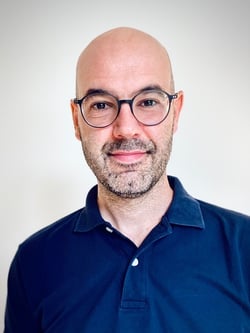
Music involves sensory perceptive, communicative, cognitive, emotional-affective and motor systems. Because of its potential and the evidence found, music has become a valuable tool to use in clinical settings, both for relations and rehabilitation.
Using examples from clinical sessions, the presentation will explore how music therapy can be structured in the context of dementia and neurorehabilitation.
The examples will refer to the impact of music therapy on dementia (with special reference to communication and relations) and, as regards neuro-motor rehabilitation, techniques and possible ways that music that can complement and increase the effectiveness of standard rehabilitation paths. There will also be examples of neurorehabilitation with technological support through 'sonification' techniques.
Melomics-Health is an algorithm created to compose music for treatment purposes. Its features and possible implications in the field of music therapy will be discussed. Listening to music is an important therapeutic tool and a large amount of scientific literature has highlighted its potential. However, the mechanisms of action and therapeutic implications are not yet fully understood. A music algorithmic forms the basis for a meeting point between music and science in the context of treatment.
The pieces produced by Melomics-Health have a therapeutic purpose and by-pass the cultural and aesthetic components of music, i.e. they focus on specific musical structures and parameters that may be effective in treatment. Melomics-Health music can be modelled and designed according to treatment and taking into account the person and the results produced. Examples of algorithmic music and current experiments to test its effectiveness in treatment will be presented during the talk.
- Raglio, A., Panigazzi, M., Colombo, R., et al. (2021). Hand rehabilitation with sonification techniques in the subacute stage of stroke. Scientific reports, 11(1), 7237. https://doi.org/10.1038/s41598-021-86627-y
- Raglio A., Molteni D., Imbriani C., Panigazzi M. La riabilitazione neuromotoria con tecniche di “sonification”. G Ital Med Lav Erg 2021; 43:3, Suppl, 42-46 ISSN 1592-7830
- Colombo, R., Raglio, A., Panigazzi, M., Mazzone, A., Bazzini, G., Imarisio, C., ... & Imbriani, M. (2019). The SonicHand Protocol for Rehabilitation of Hand Motor Function: A Validation and Feasibility Study. IEEE Transactions on Neural Systems and Rehabilitation Engineering, 27(4), 664-672
- Raglio A., Molteni D., Panigazzi M., Imbriani C. La riabilitazione con la musica nella medicina riabilitativa e nelle cure correlate: basi scientifiche e applicazioni. G Ital Med Lav Erg 2018; 40:1, Suppl, 59-66 ISSN 1592-7830
Prof. Luca Gabutti
USI professor and head of the EOC Department of Internal Medicine
He graduated in medicine from the Lausanne University in 1990 and then obtained the title of MD at Bern University in 1996, PD and full professorship at Lausanne University in 2006 and 2012.
He was fascinated by electrolyte disorders in haemodialysis and began research in internal medicine on cardiovascular risk factors, hypertension, vascular rigidity, data networking between hospitals and the quality and appropriateness of care.
Music and social cohesion
As we will see from the speaker's presentation, involvement in music plays a key role in creating social bonds between individuals and groups, promoting health and well-being. Although this has long been recognised and can be seen in many aspects of everyday life – for example, choirs, football supporters, military bands, singing nursery rhymes with children - recent research has identified the neural mechanisms by which singing, dancing and making music together create feelings of gratification that continue even after shared musical activity has ended. Using music to create social cohesion is part of all known human societies and is deeply rooted in our evolutionary history, as it emerged long before language, some 100,000 years ago.
This lecture will summarise the evolutionary history and role of musicality and sociality in the lives of our earliest ancestors, before reviewing current thinking on how neurobiological mechanisms create this bond. It will also look at how the socially cohesive effects of music have been intentionally used for various purposes, from modern medicine to financial and political advantage through social manipulation.
Steven Mithen
Archaeologist, University of Reading (UK)

He is an archaeologist at the University of Reading (UK). He graduated in Prehistory and Archaeology from Sheffield University in 1983 and completed an MSc in Biological Computing at the University of York. From 1984 to 1988 he obtained his PhD on the decision-making process of prehistoric hunter-gatherers from Cambridge University. This developed his interest in the evolution of the human brain, language and music.
- Savage, P., Loui, P., Tarr, B., Schachner, A., Glowacki, L., Mithen, S., & Fitch, W. 2011. Music as a coevolved system for social bonding. Behavioural and Brain Sciences 44, E59. https://doi.org/10.1017/S0140525X20000333
- Mithen, S.J. 2005. The Singing Neanderthals: The Origins of Music, Language, Mind and Body. London: Weidenfeld & Nicolson. 374 pp. ISBN 13-780297-643173, ISBN 10-0-297-64317 72005
- Mithen S. The music instinct: the evolutionary basis of musicality. Ann N Y Acad Sci. 2009 Jul;1169:3-12. https://doi.org/10.1111/j.1749-6632.2009.04590.x. PMID: 19673750.
Deborah Parker
Musician and music therapist, Prima Materia Association, Montespertoli (I)
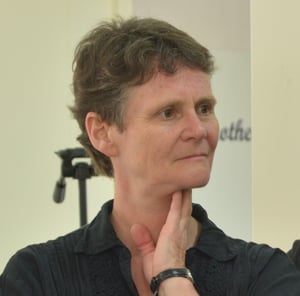
She studied music at York University (UK) and completed her master’s degree as a cellist at the Musikhochschule Freiburg im Breisgau (Germany). She later settled in Italy, before completing a master’s degree as a music therapist in Assisi and Cambridge. She is a founding member of the Prima Materia Association, as well as educational co-ordinator of the association’s community music project in Montespertoli, which includes a music therapy clinic. She works as a music therapy trainer, leading professional courses all over Italy.
Community music practice recognizes music making as a primary resource for individual expression, communication and social well-being and consequently as a powerful catalyst of social transformation.
The community-based organization Prima Materia has developed music resources over the last decades, both for the local community in Montespertoli (FI) and in Lebanon, as a protection factor for the Palestinian refugee community constrained to live there, through the project, "Music and Resilience", which was awarded the Musical Rights prize by the International Music Council in 2013.
Windows will be opened onto these projects, and the research they have stimulated, through audio-visual documentation, case-studies and narratives, providing evidence of music's potential to support positive change within a wide range of social contexts including mental healthcare, psychosocial work, education and culture. The documentation will bring to light some of the specific properties and attributes of music-making in a community setting, which generate social cohesion, based on what Lee Higgins (2012) describes as "unconditional hospitality", in which every member of the community is welcomed, respected and valued.
- Higgins, L. (2012). Community music: In theory and in practice. Oxford University Press.
https://doi.org/10.1093/acprof:oso/9780199777839.001.0001 - Parker, D., Younes, L., Orabi, M., Procter, S., & Paulini, M. (2021). Music therapy as a protection strategy against toxic stress for Palestinian refugee children in Lebanon: A pilot research study. Approaches: An Interdisciplinary Journal of Music Therapy . http://approaches.gr/parker-a20210510/
- Parker, D., Gentili, D., Brown, H., Balducci, A. (2021). Adjusting the Pitch: An Ethnographic Exploration of Action Learning in an International Music Exchange Project. Voices: a world forum for music therapy vol.21/2. GAMUT. https://doi.org/10.15845/voices.v21i2.3075
Prof. Peter Schulz
USI professor, Faculty of Communication, Culture and Society
Professor of Communication Theories and Health Communication at USI. His work has aimed to combine the humanities, social sciences and information technology to explore important issues in health communication.
Since 2017, he has also been an honorary professor at ANU (the Australian National University, Canberra).